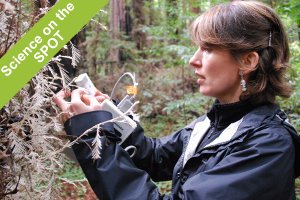 UC Santa Cruz plant biologist Jarmila Pitterman studies an albino redwood tree
UC Santa Cruz plant biologist Jarmila Pitterman studies an albino redwood tree
Why?
How many times do we parents of preschoolers hear that question each day? “WHY do birds fly? WHY does the wind blow? WHY do bees buzz? WHY are trees green? WHY do I have to eat my broccoli?”
“Because I SAID so.”
“WHY??”
Science begins with our curiosity. The first step is to start asking questions, probably most often “Why?” and “How?” And as much as we wish it were different, in science, “because I said so” is never answer enough. You have to back up your case with some proof, or at least some compelling evidence. And even then, your case will likely not be accepted on its face as truth, but tested and re-tested, re-asked and re-proven via a time-tested set of agreed-upon steps. This is known as the Scientific Method: 1) Ask a question. 2) Construct a hypothesis. 3) Experiment. 4) Analyze your results 5) Repeat if necessary and draw your conclusions. 6) Communicate your findings. While we all come into our questions with personal or cultural beliefs, the scientific method attempts to remove the beliefs of the scientist when testing a hypothesis point the way towards a verifiable fact or facts.
